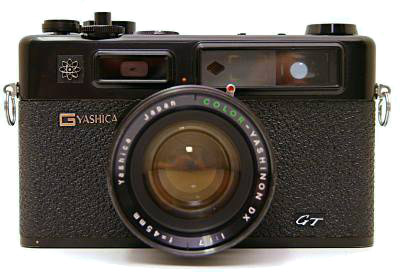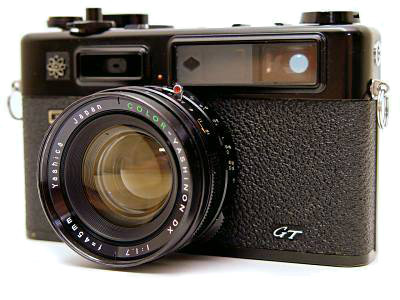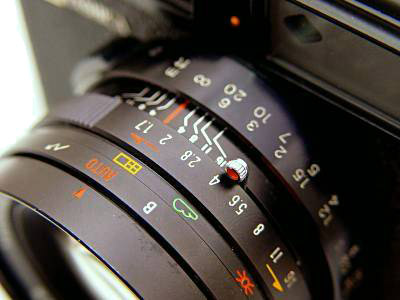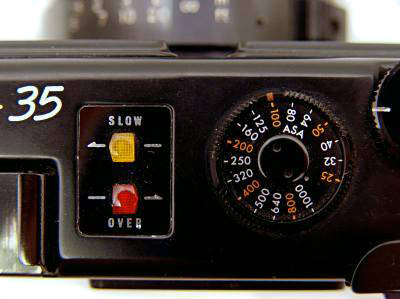|
The Yashica Electro GT belongs to the 1960's generation of rangefinder cameras. Its size is comparable to that of the Konica Auto S2 and the elder Minolta Hi-Matic models 7S, 9, and 11. The camera looks attractive and seems very well built. It has a fast 1:1.7 45mm lens. There is a similar chrome finished model called Electro 35 GS. The major improvements of this third generation of the Electro 35 series over the predecessors are the color corrected "Color Yashinon" lens, gold finished electrical contacts, film speed up to 1000 ASA, back door opening via the film winding lever (introduced with the second generation 35 G). Furthermore some minor cosmetical changes (body-cap shape, release-lock lever, etc.) were made. The difference to the GSN / GTN is only that there is no hot shoe, the flash has to be connectet via the PC socket. For a brief history of the Yashica Electro 35 series see the article on the Electro 35. Frequently quoted advantages of these cameras are the outstandingly sharp lens (see e.g. the commented sample picture of Karen Nakamura), the quiet copal shutter, which allows for free-hand exposure down to a 1/8 sec (or even below). All Yashica Electro rangefinders operate in a semi-automatic aperture priority mode (the user sets the aperture, the camera chooses the appropriate exposure time). To my intuition the aperture ring turns the wrong way around. For Nikon and Olympus users this might be less an issue. However, all in all they are very pleasant to work with. A disadvantage is that the exposure time is not shown in the viewfinder. The only information the camera provides is a yellow or red arrow (in the viewfinder) and light (on the top cover), which indicate overexposures (<1/500 sec) and times longer than 1/30 sec, respectively. Hence, you do not really have control over the exposure parameters. Furthermore, there is no exposure lock. The photographer can only take influence via the film-speed setting. Nevertheless the exposure results are surprisingly good. The meter, located next to the viewfinder window, seems to be so well balanced that highly satisfying results are possible. Then there is the battery problem - the Yashica Electro 35 rangefinders take PX 32 mercury batteries, which are no longer available today. You can help yourself using four 1.5 V LR44 silver cells (or a 6V 4LR44) and a handmade adapter (a rolled piece of a cardboard and crumpled aluminum foil will do) to fit these into the large battery compartment. The camera will properly work at any voltage between 4.6 and 6.5 V. Accessories available for the Electro 35 cameras were a close-up adaptor and a set of conversion lenses. For the latter, see the discussion of the Electro 35 GSN. The Yashica Electro cameras have, due to their age, a problem with the coupling of the primary and secondary shutter release mechanism. See my repair page. |
|




